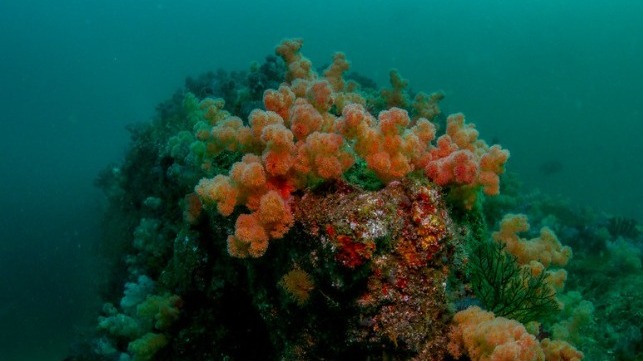Climate Change Threatens the Western Indian Ocean's Rich Coral Reefs

A great deal of academic literature exists on the Western Pacific’s “Coral Triangle,” detailing coral species diversity and distribution as well as bleaching effects caused by warm waters and climate change. The region – which includes the waters of Indonesia, Malaysia, the Philippines, Papua New Guinea and the Solomon Islands - has earned the moniker of the “Amazon of the Oceans” for its rich biodiversity. Civil society groups and researchers in the Asia-Pacific region have organized a well-coordinated effort to study and monitor these reefs, boosting the physical and academic prominence of the Coral Triangle. The area is also a magnet for divers and snorkelers around the world, who come to enjoy a pristine environment that supports unmatched diversity of reef fish and other marine life.
The Western Indian Ocean (WIO) along the African coastline has the second largest coral presence and diversity after the Coral Triangle. About 369 coral species have been named in this region, with the maximum concentration occurring in the northern Mozambique Channel, particularly near Nacala.
The Western Indian Ocean is fed by the east-west South Equatorial Current, and when it encounters the intricate coastline of northern Madagascar and the Mozambique Channel, it forms gyres and eddies that result in high mixing of waters. Over years this has led to retention and accumulation of genetic material within the northern Mozambique Channel, establishing high corals species diversity.
I recently spoke to Dr. David Obura, the director of CORDIO (Coastal Oceans Research and Development-Indian Ocean) East Africa, about the imminent threats to these resources. Frequent intense heating spells in the Indian Ocean as well as intensive reef fisheries and coastal development comprise a growing list of factors threatening the survival of corals in the Western Indian Ocean.
Starting in 1998, there have been three major coral bleaching events affecting corals in this region (and indeed, corals globally). Studies showed 50-90 percent mortality of corals during the 1997-1998 event, which caused a 30 percent average reduction in coral cover in the WIO. The most recent major bleaching event happened in 2016, but despite the year being warmer than 1998, less coral death was observed. Dr.Obura attributes this to the acclimation of corals to environmental pressures through natural selection, as temperature-sensitive corals died off during previous bleaching events, leaving the stronger ones to survive and reproduce. While this apparent increase in resistance is good, Dr. Obura cautions that it may not be sufficient to protect corals from future increases in temperatures, and the loss of genetic diversity and sensitive coral species will likely result in poorer reef health and productivity in the future.
With climate change contributing to record high ocean temperatures in recent years, marine heatwaves are set to increase tremendously, resulting in shorter intervals between mass coral bleaching events. It is on this basis that Dr. Obura and a team of other marine scientists in the region have mounted an elaborate strategy to monitor coral bleaching in WIO through citizen science. The observations are shown in a regional database run by CORDIO East Africa and frequently updated to a global bleaching database by NOAA Coral Reef Watch Program. This provides real-time alerts on coral bleaching risks in the WIO.
Despite 2020 being one of the warmest years ever recorded, with sea surface temperatures relatively higher in the WIO than observed during the last bleaching event in 2016, low to moderate bleaching risks were observed - partly due to corals’ acclimation to higher ocean temperatures.
“I believe La Nina conditions that developed late last year and which currently persist in the region will shield corals from a higher bleaching risk this year, as models project yet another warm year in 2021,” said Dr.Obura. However, this is not uniform for the entire region, as large parts of Southern Mozambique Channel and East Madagascar are showing high temperature anomalies that can cause moderate bleaching.
In good news, scientists have discovered a rare ocean refuge for coral reefs off the Kenyan and Tanzanian coastlines with remarkable biodiversity intensity where species thrive despite accelerating climate change. These are pockets of deep coastal basin formed thousands of years ago, creating deep water channels that provide thermal stability, shielding marine ecosystems from the worst of the global warming. Details of this discovery are included in the latest issue of the journal Advances in Marine Biology.
Coral conservation in the Western Indian Ocean is not just an environmental matter but also an economic question, as coral reefs support fisheries used by some of the most impoverished communities in the world. The threat to their survival - primarily by climate change – will be a significant challenge for economies of island nations like Madagascar, Mauritius and Seychelles, where fisheries are an important pillar of economic development. This is despite the fact that some of these nations have among the lowest carbon footprints globally, highlighting the need for more responsibility from developed nations to commit to decarbonization. Additionally, each individual country in the region has a critical responsibility to ensure that their fisheries and coastal developments proceed in tandem with marine ecosystems conservation.
Top image: Tofo Reef / Tchami / CC BY SA 2.0 / https://www.flickr.com/photos/tchami/22153349041/in/photostream/
